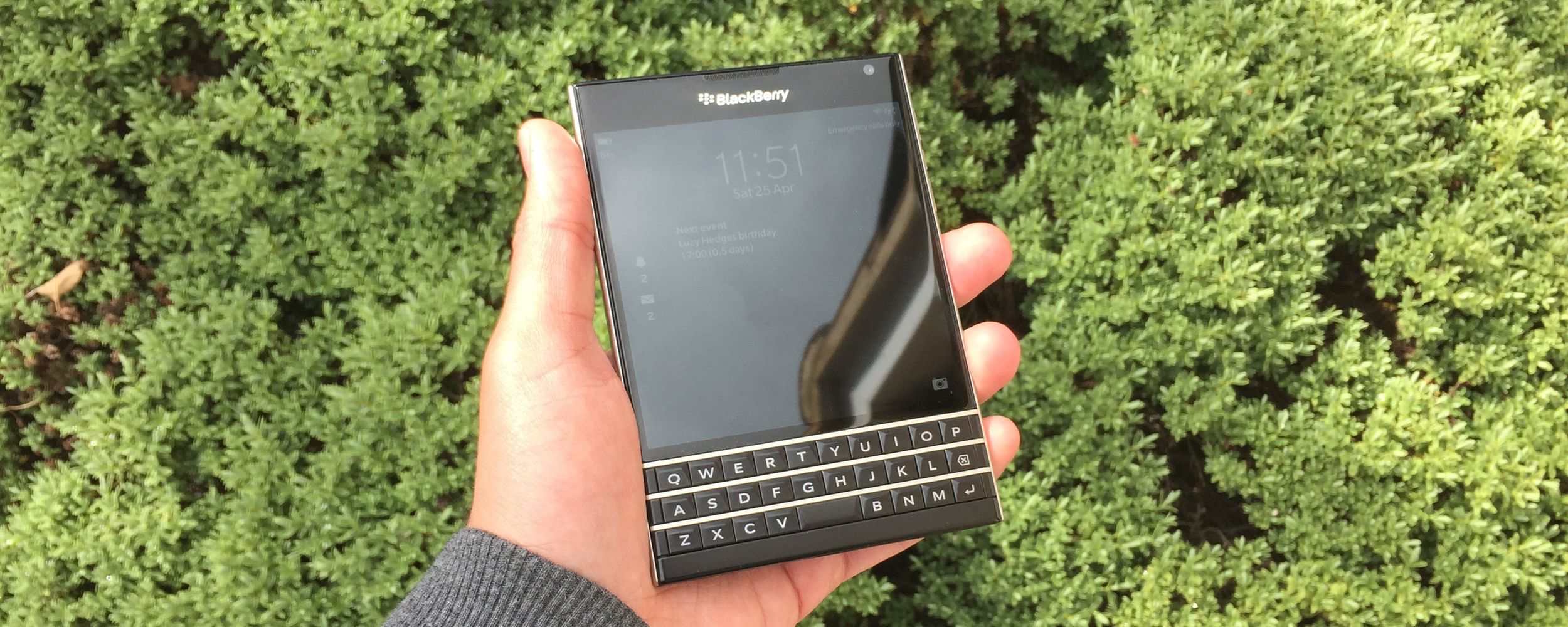My first experience with a smartphone was with a BlackBerry Bold. Truthfully, I don’t even remember which specific model it was, but I do remember picking it over the iPhone 3GS at the time.
Why? BlackBerry messenger (BBM) was one of the company’s key selling points, and with its physical keyboard and mouse, it was just a pleasure to use. I was also very sceptical about abandoning a physical keyboard for the iPhone’s touch screen.
I enjoyed my time with BlackBerry, but as the iPhone’s popularity grew I decided to jump ship for the iPhone 4, and I’ve been a loyal iPhone user ever since. This week though, I was feeling a little nostalgic and decided to give BlackBerry’s new Passport smartphone a try. Here’s what I think after a day of using it.
Unfamiliar design, but I like it
The Passport has a soft-touch plastic back and a metal frame
The BlackBerry Passport’s design has understandably been polarising with my friends & family. Many find the squared form factor odd, while others like the different/original approach. Personally, I’m swaying more towards the latter; BlackBerry have created a smartphone here that — despite an unfamiliar design — genuinely stands out from the crowd, and its design is growing on me the more I use it.
I love the wider and overall larger screen — BlackBerry really emphasise this with their “work wide” slogan — and with a resolution of 1440 x 1440 px (with 453 PPI, for all you geeks), it’s a very nice looking panel too.
From a usability point of view: I’m used to holding my iPhone 6 with one hand, and for the most part, I can get away with one-handed typing too. With the BlackBerry Passport though, you can forget about one-handed use. You can probably get away with using the touch screen with a single hand, but when it comes to typing you’ll definitely need both.
Keyboard
Keyboard on BlackBerry Passport has no physical function buttons
What I’m most curious about with the Passport is its keyboard; it’s the one thing I miss most about my old BlackBerry Bold. So far it has been an odd experience, largely because BlackBerry have removed all of the function/punctuation keys from the physical keyboard and placed them at the bottom of the display (as on-screen keys) instead.
It’s certainly a learning curve, but BlackBerry make it a little easier with clever shortcuts. For example you can use features like predictive text, hold down a key to turns that letter into a capital letter, and plenty more which you can see here.
Software & app stores
I know the BlackBerry Passport is meant to be more of a workhorse than a consumer-focused device, but I’m surprised that their App Store is so bad. I’ve struggled to find any of the basic apps I’d need, including Google’s suite of productivity apps like Docs, Sheets and Slides. YouTube is available out of the box for example but it’s actually a browser shortcut than a dedicated app, and instead of Instagram, I have to use a third party app called “iGran”. (In fairness, iGran gives me multi-account support which even Instagram doesn’t!)
Having access to the Amazon App Store helps a bit with apps like Skype and Spotify, but overall the BlackBerry software ecosystem is super underpowered. It makes it a struggle to recommend this phone to anyone other than a business person, and even then, it feels like they’ll be handicapped.
Overall first impressions
So far I have very little to fault about the BlackBerry Passport’s design & build quality; it feels like a great device and I applaud their efforts. The keyboard has been nice to type on too, but it has a big learning curve with the mix between physical & on-screen keys.
Already though, it feels like the Passport’s main hinderance is its software. With no Google apps and lacking basic social media apps like Instagram for instance, it’ll be interesting to see how I get on with it.
Have you used a BlackBerry lately? What do you think about their software ecosystem? Let me know in the comments section!



